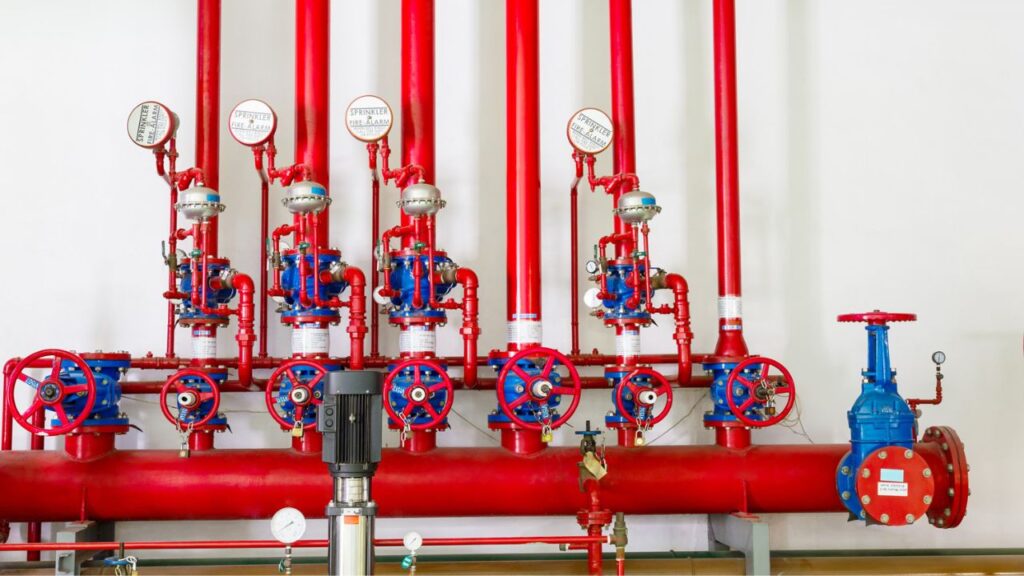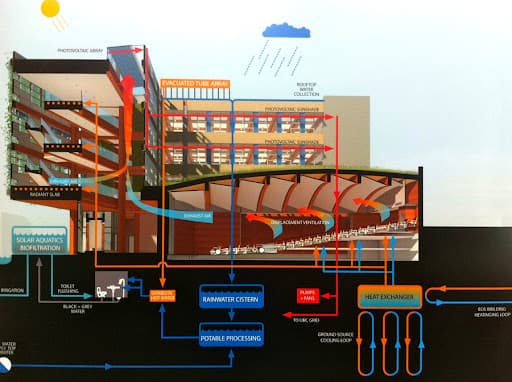What are your opinions about Anatomy of a House: Understanding the Components?

Recognizing exactly how your home's pipes system works is crucial for each home owner. From providing tidy water for drinking, food preparation, and bathing to safely getting rid of wastewater, a well-kept plumbing system is important for your family's health and convenience. In this detailed guide, we'll discover the complex network that makes up your home's pipes and deal tips on maintenance, upgrades, and handling typical issues.
Intro
Your home's plumbing system is greater than simply a network of pipes; it's an intricate system that ensures you have accessibility to clean water and reliable wastewater removal. Knowing its elements and how they interact can assist you stop pricey repair work and make sure everything runs smoothly.
Fundamental Parts of a Plumbing System
Pipelines and Tubes
At the heart of your plumbing system are the pipes and tubes that lug water throughout your home. These can be made of various materials such as copper, PVC, or PEX, each with its advantages in terms of toughness and cost-effectiveness.
Components: Sinks, Toilets, Showers, etc.
Fixtures like sinks, bathrooms, showers, and bathtubs are where water is used in your home. Recognizing how these fixtures link to the pipes system helps in diagnosing issues and intending upgrades.
Shutoffs and Shut-off Points
Valves manage the flow of water in your pipes system. Shut-off shutoffs are crucial during emergencies or when you need to make repairs, allowing you to isolate parts of the system without interrupting water circulation to the whole house.
Water System System
Key Water Line
The main water line links your home to the metropolitan water supply or a personal well. It's where water enters your home and is dispersed to various fixtures.
Water Meter and Stress Regulatory Authority
The water meter procedures your water usage, while a stress regulatory authority ensures that water flows at a risk-free stress throughout your home's pipes system, preventing damage to pipelines and components.
Cold Water vs. Warm water Lines
Understanding the distinction between cold water lines, which provide water directly from the main, and hot water lines, which carry heated water from the water heater, assists in repairing and preparing for upgrades.
Drainage System
Drain Pipeline and Traps
Drain pipes bring wastewater far from sinks, showers, and commodes to the sewage system or septic tank. Traps protect against sewage system gases from entering your home and also trap particles that can trigger blockages.
Ventilation Pipes
Air flow pipelines enable air into the drainage system, preventing suction that might slow down drain and trigger traps to empty. Proper ventilation is necessary for keeping the honesty of your pipes system.
Relevance of Appropriate Drain
Guaranteeing appropriate drain avoids backups and water damages. Regularly cleaning drains and keeping catches can protect against pricey repair work and extend the life of your plumbing system.
Water Furnace
Sorts Of Hot Water Heater
Hot water heater can be tankless or standard tank-style. Tankless heating units heat water as needed, while containers save heated water for immediate usage.
Upgrading Your Pipes System
Reasons for Upgrading
Updating to water-efficient components or replacing old pipes can enhance water quality, lower water costs, and enhance the value of your home.
Modern Pipes Technologies and Their Advantages
Check out technologies like wise leakage detectors, water-saving commodes, and energy-efficient hot water heater that can conserve cash and decrease ecological effect.
Cost Considerations and ROI
Compute the in advance costs versus long-term savings when thinking about plumbing upgrades. Many upgrades spend for themselves with decreased energy expenses and fewer fixings.
Exactly How Water Heaters Connect to the Pipes System
Comprehending how hot water heater link to both the cold water supply and hot water distribution lines aids in identifying concerns like inadequate hot water or leakages.
Maintenance Tips for Water Heaters
Routinely purging your water heater to eliminate debris, inspecting the temperature setups, and inspecting for leakages can extend its life-span and boost power performance.
Common Plumbing Concerns
Leaks and Their Causes
Leakages can take place due to aging pipes, loosened installations, or high water pressure. Attending to leakages promptly avoids water damages and mold and mildew development.
Obstructions and Blockages
Blockages in drains pipes and bathrooms are usually brought on by flushing non-flushable things or a buildup of oil and hair. Using drain displays and being mindful of what decreases your drains pipes can avoid clogs.
Indicators of Pipes Issues to Expect
Low water pressure, slow-moving drains, foul odors, or abnormally high water bills are indications of prospective pipes problems that ought to be resolved promptly.
Plumbing Upkeep Tips
Normal Examinations and Checks
Set up annual plumbing assessments to capture issues early. Search for indications of leaks, rust, or mineral build-up in taps and showerheads.
DIY Maintenance Tasks
Basic jobs like cleaning faucet aerators, checking for bathroom leaks using color tablet computers, or shielding revealed pipelines in chilly climates can protect against major plumbing issues.
When to Call a Professional Plumber
Know when a pipes problem needs expert knowledge. Attempting complex repair services without appropriate knowledge can bring about even more damages and higher repair prices.
Tips for Lowering Water Use
Basic practices like repairing leaks without delay, taking much shorter showers, and running complete loads of washing and dishes can conserve water and reduced your utility bills.
Eco-Friendly Pipes Options
Take into consideration sustainable plumbing products like bamboo for floor covering, which is durable and environment-friendly, or recycled glass for counter tops.
Emergency Readiness
Actions to Take During a Plumbing Emergency situation
Know where your shut-off valves lie and exactly how to shut off the water supply in case of a ruptured pipe or significant leakage.
Relevance of Having Emergency Situation Contacts Helpful
Keep call info for local plumbers or emergency services conveniently offered for fast response throughout a plumbing situation.
Ecological Impact and Preservation
Water-Saving Components and Home Appliances
Installing low-flow taps, showerheads, and toilets can dramatically decrease water usage without compromising performance.
Do It Yourself Emergency Fixes (When Appropriate).
Short-lived fixes like making use of duct tape to patch a dripping pipe or placing a container under a dripping tap can reduce damage till an expert plumbing gets here.
Final thought.
Understanding the makeup of your home's plumbing system encourages you to preserve it effectively, conserving time and money on fixings. By complying with regular maintenance regimens and staying educated regarding modern pipes technologies, you can guarantee your plumbing system runs efficiently for several years to find.
Exploring Your Homes Plumbing Anatomy
Water Supply System
Main Water Line: This is where water enters your home from the municipal supply or a private well. Water Meter: Typically located near where the main water line enters the property, it measures the amount of water used. Shutoff Valve: It s crucial to know where this is in case of emergencies. It allows you to turn off the water supply to the entire house. Pipes and Fittings: These distribute water throughout your home. Materials can include copper, PVC, or PEX. Drain-Waste-Vent (DWV) System
Drains: Located in sinks, showers, and tubs, these carry wastewater away. Traps: U-shaped pipes under sinks that hold standing water, blocking sewer gases from entering the home. Vents: Pipes that lead from the DWV system to the outside, preventing vacuum formation and allowing gases to escape. Sewer Line: Carries all wastewater from the home to the municipal sewer system or a septic tank. Fixtures and Appliances
Sinks, Toilets, and Showers Dishwashers and Washing Machines Water Heaters Maintenance Tips
Regularly check for leaks in exposed pipes and around fixtures. Inspect the water heater annually for signs of wear. Clean drains and traps to prevent clogs and odors. Know how to shut off water to individual fixtures. When to Call a Professional
Major leaks or burst pipes Installation of new pipes or fixtures Septic tank issues Remodeling projects that involve plumbing changes Conclusion
Understanding the anatomy of your home's plumbing is key to maintaining a functional and efficient system. Regular checks and knowing when to call in the experts can save you time, money, and stress.
https://www.mavyn.com/blog/exploring-your-homes-plumbing-anatomy

I ran across that entry on Understanding Your Home's Plumbing Anatomy while perusing the search engines. Do you know somebody who is curious about the niche? Do not hesitate to promote it. Thank you for your time spent reading it.
Additional Resources